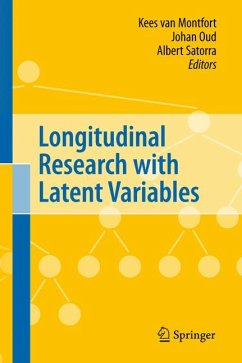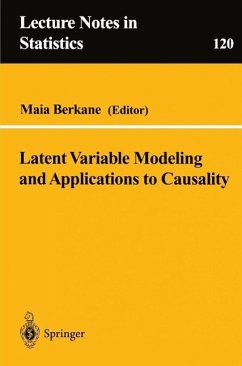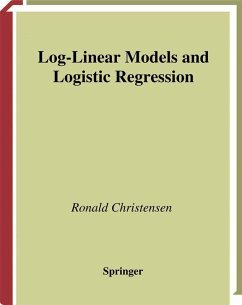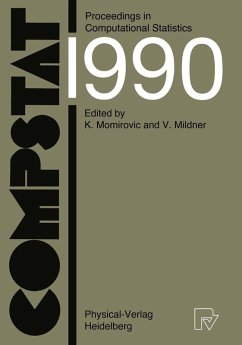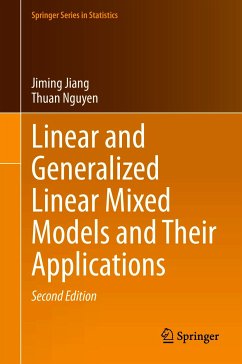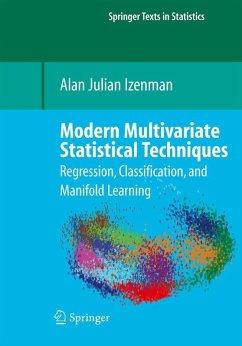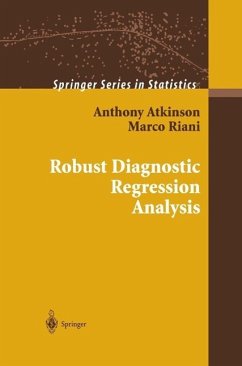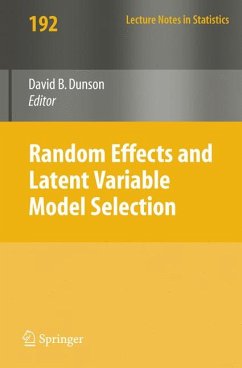
Random Effect and Latent Variable Model Selection (eBook, PDF)
Versandkostenfrei!
Sofort per Download lieferbar
40,95 €
inkl. MwSt.
Weitere Ausgaben:

PAYBACK Punkte
20 °P sammeln!
Random effects and latent variable models are broadly used in analyses of multivariate data. These models can accommodate high dimensional data having a variety of measurement scales. Methods for model selection and comparison are needed in conducting hypothesis tests and in building sparse predictive models. However, classical methods for model comparison are not well justified in such settings.This book presents state of the art methods for accommodating model uncertainty in random effects and latent variable models. It will appeal to students, applied data analysts, and experienced research...
Random effects and latent variable models are broadly used in analyses of multivariate data. These models can accommodate high dimensional data having a variety of measurement scales. Methods for model selection and comparison are needed in conducting hypothesis tests and in building sparse predictive models. However, classical methods for model comparison are not well justified in such settings.
This book presents state of the art methods for accommodating model uncertainty in random effects and latent variable models. It will appeal to students, applied data analysts, and experienced researchers. The chapters are based on the contributors' research, with mathematical details minimized using applications-motivated descriptions.
The first part of the book focuses on frequentist likelihood ratio and score tests for zero variance components. Contributors include Xihong Lin, Daowen Zhang and Ciprian Crainiceanu.
The second part focuses on Bayesian methods for random effects selection in linear mixed effects and generalized linear mixed models. Contributors include David Dunson and collaborators Bo Cai and Saki Kinney.
The final part focuses on structural equation models, with Peter Bentler and Jiajuan Liang presenting a frequentist approach, Sik-Yum Lee and Xin-Yuan Song presenting a Bayesian approach based on path sampling, and Joyee Ghosh and David Dunson proposing a method for default prior specification and efficient posterior computation.
David Dunson is Professor in the Department of Statistical Science at Duke University. He is an international authority on Bayesian methods for correlated data, a fellow of the American Statistical Association, and winner of the David Byar and Mortimer Spiegelman Awards.
This book presents state of the art methods for accommodating model uncertainty in random effects and latent variable models. It will appeal to students, applied data analysts, and experienced researchers. The chapters are based on the contributors' research, with mathematical details minimized using applications-motivated descriptions.
The first part of the book focuses on frequentist likelihood ratio and score tests for zero variance components. Contributors include Xihong Lin, Daowen Zhang and Ciprian Crainiceanu.
The second part focuses on Bayesian methods for random effects selection in linear mixed effects and generalized linear mixed models. Contributors include David Dunson and collaborators Bo Cai and Saki Kinney.
The final part focuses on structural equation models, with Peter Bentler and Jiajuan Liang presenting a frequentist approach, Sik-Yum Lee and Xin-Yuan Song presenting a Bayesian approach based on path sampling, and Joyee Ghosh and David Dunson proposing a method for default prior specification and efficient posterior computation.
David Dunson is Professor in the Department of Statistical Science at Duke University. He is an international authority on Bayesian methods for correlated data, a fellow of the American Statistical Association, and winner of the David Byar and Mortimer Spiegelman Awards.
Dieser Download kann aus rechtlichen Gründen nur mit Rechnungsadresse in A, B, BG, CY, CZ, D, DK, EW, E, FIN, F, GR, HR, H, IRL, I, LT, L, LR, M, NL, PL, P, R, S, SLO, SK ausgeliefert werden.




